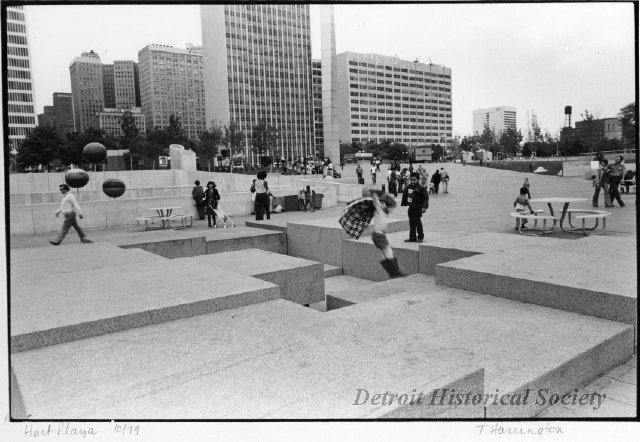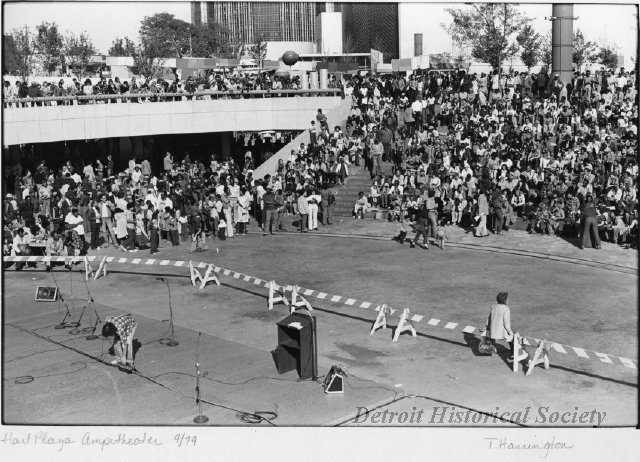Hart Plaza, located south of the intersection of Jefferson and Woodward Avenues, is situated approximately on the site where Antoine de la Mothe Cadillac landed in 1701 and founded the settlement that became Detroit. Opened in 1975 on the Detroit River, the 14-acre plaza occupies an area that was once the bustling heart of the city, replete with ferry boats, steamers and ticket offices. Today, Hart Plaza is a popular focal point for festivals and public gatherings with the capacity of 40,000 people.
There were several attempts to establish a civic center in this space, starting with Mayor Hazen Pingree in 1890. Then in 1924 noted architect Eliel Saarinen (at the time a professor of architecture at the University of Michigan) was asked to create a plan for utilizing the riverfront property that included a war memorial, but the plan was shelved. Some 23 years later Saarinen, along with his son Eero, created a version of a civic center plaza that incorporated the riverfront and was somewhat followed, though lacking in its proposed central green spaces.
Instead, this open riverfront park, named in honor of the late Senator Philip A. Hart, features great expanses of cement, anchored by the doughnut-shaped Horace E. Dodge and Son Memorial Fountain, designed by Isamu Noguchi. Other artwork includes another Noguchi piece, a steel pylon that marks the entrance to the Plaza, and to the west, a large, circular sculpture called Transcending, by David Barr and Sergio De Guisti. Closer to the Detroit River is a statue of Detroit’s founder Cadillac, and a memorial to the Underground Railroad called Gateway to Freedom by Dwight Edward. A Ford Motor Company historical marker, showing the site where the company’s articles of incorporation were signed in 1903, is also on Hart Plaza.
The Plaza includes a Veterans Memorial Hall, now the UAW-Ford National Programs Center, and is adjacent to the Huntington Place (formerly Cobo Hall and briefly known as the TCF Center). Across Jefferson is the Coleman A. Young Municipal Building, also conceived as an element of the civic center plaza. Another component, the Henry and Edsel Ford Auditorium, was demolished in 2011.
In 2011 the Detroit/Wayne County Port Authority added a cruise ship dock and passenger terminal to a site between Hart Plaza and the Renaissance Center. The Plaza is also part of the Detroit International River Walk, a promenade that will eventually stretch from the Ambassador Bridge to Belle Isle.

